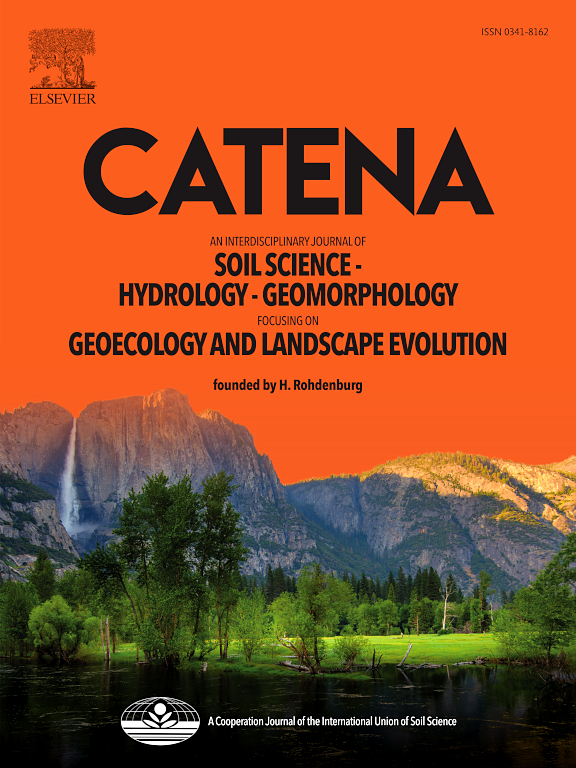Patterns and determinants of plant- and microbial-derived carbon in desert riparian ecosystems: Implications for organic C accumulation
IF 5.4
1区 农林科学
Q1 GEOSCIENCES, MULTIDISCIPLINARY
引用次数: 0
Abstract
Desert riparian ecosystems play a critical role in carbon cycling in arid regions. As a natural barrier between deserts and oases, riparian vegetation reduces the wind’s erosive effect on the soil through its leaves and branches, while its roots stabilize soil nutrients. However, the relative importance of plant- and microbial-derived carbon (C) for soil organic carbon (SOC) in desert riparian ecosystems remains an open question. Here, we investigated the variations in plant- and microbial-derived C in soil profiles (0–40 cm) across typical vegetation types (woodland, shrubland, and grassland) in desert riparian ecosystems. We observed that the SOC content, including the plant- and microbial-derived C, in desert riparian ecosystems were largely determined by vegetation types. Interestingly, the mean contribution of plant-derived C to SOC in 0–40 cm grassland vegetation was significantly higher than that in woodland and shrubland vegetation (13.74 % vs 4.95 % vs 4.35 %, respectively). Microbial-derived C contributed 5.55 %, 5.24 % and 3.25 % on the mean to SOC in 0–40 cm grassland, woodland and shrubland vegetation, respectively. Bacterial-derived C contributed more to SOC in woodland than shrubland and grassland vegetation. Soil water conditions emerged as a significant factor affecting the accumulation of plant- and microbial-derived C. Partial least squares path model (PLS-PM) showed that soil water content (SWC) can promote the accumulation of plant- and microbial-derived C by regulating soil nutrients and enzyme activities (PO and NAG). These findings provide new insights into SOC accumulation variations in desert riparian ecosystems, highlighting the distinct contributions of plant- and microbial-derived carbon under different vegetation types.
求助全文
约1分钟内获得全文
求助全文
来源期刊

Catena
环境科学-地球科学综合
CiteScore
10.50
自引率
9.70%
发文量
816
审稿时长
54 days
期刊介绍:
Catena publishes papers describing original field and laboratory investigations and reviews on geoecology and landscape evolution with emphasis on interdisciplinary aspects of soil science, hydrology and geomorphology. It aims to disseminate new knowledge and foster better understanding of the physical environment, of evolutionary sequences that have resulted in past and current landscapes, and of the natural processes that are likely to determine the fate of our terrestrial environment.
Papers within any one of the above topics are welcome provided they are of sufficiently wide interest and relevance.
 求助内容:
求助内容: 应助结果提醒方式:
应助结果提醒方式:


